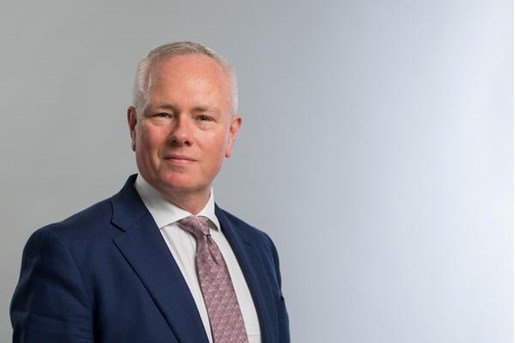Ofgem shows that competition is still high on their agenda and if they can't have CATOs, they are looking at alternative ways of bringing in competition.
Earlier this year, the future of competition in onshore electricity transmission was thrown into doubt when Ofgem published an open letter warning that the Competitively Appointed Transmission Owner (CATO) regime would be put on hold pending the necessary primary legislation (Brexit taking up the Parliamentary timetable for the next two years). But a recent consultation from Ofgem shows that competition is still high on their agenda and if they can't have CATOs, they are looking at alternative ways of bringing in competition.
Hinkley-Seabank project
The consultation relates to the Hinkley-Seabank project which would allow the new Hinkley Point C nuclear power station to connect to the main GB electricity transmission network. This project was put forward by National Grid Electricity Transmission (NGET) under the Strategic Wider Works (SWW) framework. The SWW allows the electricity transmission owners to apply for funding for large and uncertain projects once the need and costs for the project become more certain. Hinkley-Seabank is at the Final Needs Case stage, where Ofgem take a final decision on whether there is a need for it, informed by a robust review of the cost-benefit analysis. As part of their analysis, Ofgem decide whether a project is suitable for competition, i.e. whether it meets the 'new, separable and high-value' criteria (see our previous article for details of these).
Two models for competition
Ofgem have decided that, with a bit of re-packaging to remove some assets that are not 'new', the project meets the criteria and is suitable for opening up to competition. But with CATOs not an option for the time being, they have put forward two alternative models:
- The SPV model – NGET (not Ofgem) would run a competition for the construction, financing and operation of the Hinkley-Seabank project through a project-specific special purpose vehicle (SPV). The SPV would deliver the project under the terms of a contract (Delivery Agreement) with NGET, who would retain responsibility for and operational control of the project. The SPV would finance, construct and operate the project for a fixed period, potentially 25 years, in return for a defined revenue under its contract with NGET.
- The Competition Proxy model – NGET would deliver the project, but Ofgem would set NGET an allowed revenue in line with the revenue Ofgem consider would have resulted from an efficient competition for construction, financing and operation of the project. The revenue would be fixed for potentially 25 years and Ofgem would base it on their determination of a weighted average cost of capital for the revenue term and efficient costs for construction and operations. Ofgem would use appropriate benchmarks (e.g. from OFTO tenders) to determine these costs.
Ofgem consider that both these delivery models could deliver potential savings of around £30-£120 million as compared to the SWW status quo.
Looking at these models in a bit more detail, they are similar to a CATO but not quite the same. They both, like a CATO, envisage a 25 year revenue stream, either set by competition under the SPV model, or by Ofgem using their experience of running tenders under the OFTO regime (see our article for further detail on OFTOs). Under both new models, unlike a CATO, the assets would remain governed by NGET's transmission licence: the SPV would finance, build and operate them on behalf of NGET under a contract in the SPV model; or NGET would build and operate them itself under the Competition Proxy model.
The Delivery Agreement between the SPV and NGET would specify the required construction and operational works and include a requirement for the SPV to comply with relevant licence obligations of NGET, since NGET would retain overall regulatory responsibility. NGET would take the lead in drafting the Delivery Agreement, having first agreed the principles with Ofgem.
NGET has expressed concern about the SPV model, favouring a model where it constructs and owns the assets. It will be interesting to see its formal response to the consultation. However, the consultation does envisage NGET being able to share in the benefits of the SPV model commensurate with any risk it remains exposed to by being the licence holder responsible for the project. NGET may be able to retain an equity stake in the SPV and might be able to retain a proportion of the overall consumer saving by using a competition model.
Ofgem also anticipate that the SPV model in particular will provide them with a significant level of price discovery on how the market values the risks faced by incumbent transmission owners and is likely to provide some useful benchmarks for Ofgem to consider in setting future price controls.
The Competition Proxy model, where NGET retains ownership and control of the project, means lower risk for NGET than the SPV model but still gives a guaranteed 25-year revenue stream.
There is still the option of using neither of these models and simply continuing the SWW process.
Next steps
The consultation closed on 11 October 2017 and Ofgem will decide on the Final Needs Case for Hinkley-Seabank in December, consulting on the delivery approach that they intend to take (SPV Model, Competition Proxy or SWW) at the same time. If they decide on the SPV Model, the SPV competition may need to begin by Q1 2018.
In early 2018 Ofgem will publish further details on approaches for introducing competition to RIIO-T2 projects and will conduct a Project Assessment for Hinkley-Seabank.
There are still some details to be ironed out, such as: whether and how any subsidiary of NGET could bid in an SPV tender; the extent to which the revenue stream is completely fixed, or whether there may be review points for operational expenditure; and last resort arrangements such as transmission owner termination and step-in rights.
Comment
This is a welcome step and the basic models look sound, albeit investors will need more detail to have confidence that these models will make it easy to deliver new entrants to this space.

Richard Goodfellow
Head of IPE and Head of Energy and Utilities (Global)
United Kingdom



